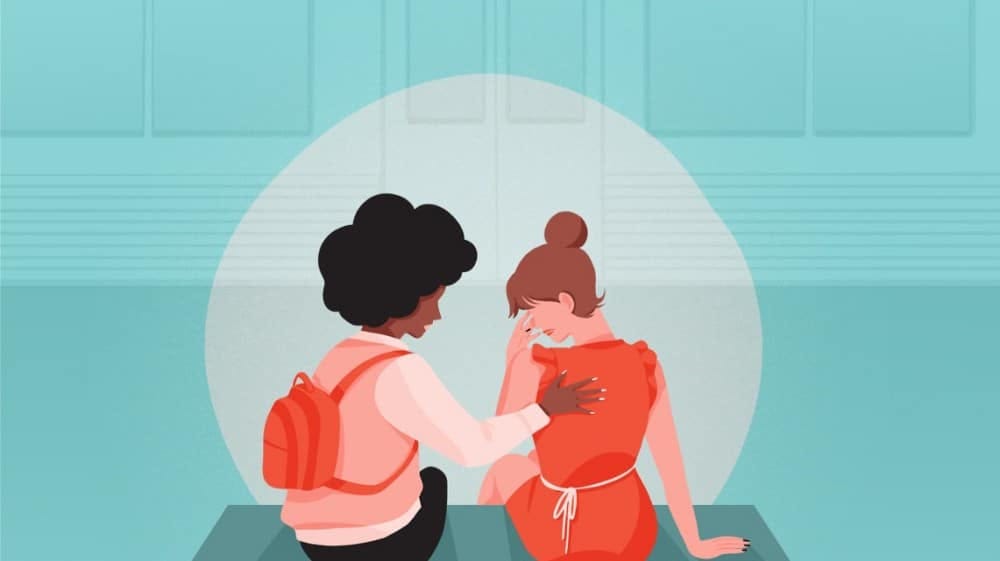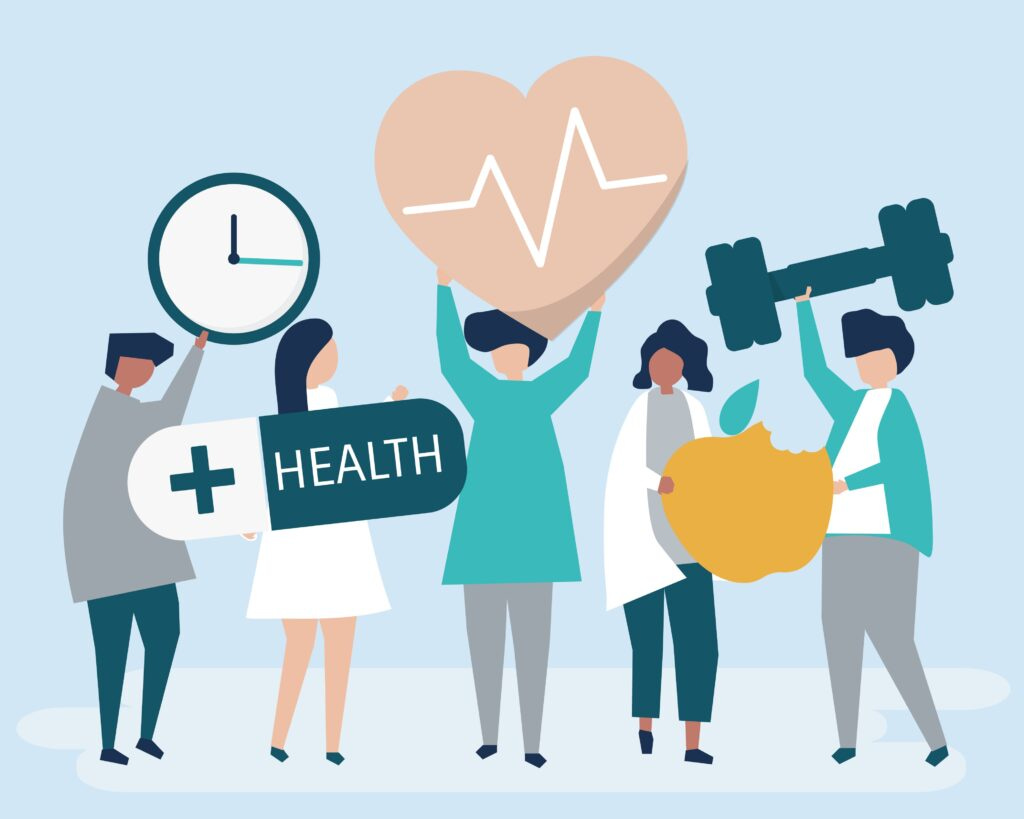How to use Positive Psychology during the pandemic
Breath in, breath out! This has not been easy, hasn’t it?
Without a question, any of us was expecting to have 2020 start in such a chaotic manner. Because of COVID-19 global pandemic, within days, hours even, we experienced sudden and unexpected disruptions in our social, economic, and psychological lives.
In these times, uncertainty builds, and right alongside, many of us can be overcome with fear and anxiety, probably shifting to anger and sadness, and then back again. Almost as in a continuous state of grief, where feelings of stress are undeniable and isolation, can only intensify everything.
But you should know: these feelings are OK!
The stress we are all feeling is natural and, in fact, it is necessary during times of adversity. Stress prepares our mind and body for action. Knowing how to use this stress effectively is the key to build resilience.
Besides, external tools such as technology, we all have intrinsic internal tools available, on-demand.
One important tool is our capacity for positive emotions. Even when it feels paradoxical, feeling positive emotions (love, gratitude, joy) in the midst of a global crisis can promote resilience. “Resilience” is having the ability to adapt well in the face of adversity.
People that are resilient, know how to manage stress effectively to optimize performance, engagement, and focus. And most importantly, resilient people also allow themselves time to rest. Then they repeat the cycle. After sufficient rest, they can focus their attention to take on difficult tasks. This, of course, is the challenge. In a state of prolonged stress, how can we cope?
According to different studies, research supports the following resilience strategies for keeping stress at bay through the ongoing crisis (Tugade, 2020).
Social connection: Keep your physical distance, but stay connected
One of our greatest human strengths is our desire to connect, to help, and to give to others in times of stress. We crave hugs, closeness, and being together. The biggest change in our lives is having regular, face-to-face social interaction. But what is especially challenging about the COVID-19 pandemic is that there are mental health challenges that may arise as a consequence of the social isolation required of us in order to protect others from the spread of the virus. In many ways, this viral pandemic may be fuelling a loneliness pandemic (Santos & Zaki, 2020).
And loneliness can be quite dangerous!
Even in the midst of social distancing, however, it is essential to stay connected with others (Tugade, 2020). Be intentional about social media use. Rather than panic-scrolling, find positive channels where you can learn something new, listen to good music, or just play a good online game with your friends.
You may also want to include virtual-coffees, virtual dinners, cooking sessions, happy hours, online group chats — and good, old-fashioned phone calls. Check on your friends and others in your building, your neighbourhood, and let them know you are thinking of them.
Your body’s stress response also has benefits for social bonding. When stress levels rise, our bodies release a neurohormone, oxytocin, which signals a need for social connection and social bonding (Olff et al., 2013). In this way, stress alerts us to the need to connect with others, to check in on our loved ones, and to build community.
Beyond the benefits of social interaction, oxytocin also increases pain thresholds because it is also a natural anti-inflammatory that facilitates healing from any cardiovascular damage.
This is the time to be innovative on how to be compassionate toward others. It may be something simple as buying food to your neighbour, taking time for altruism, not only gives you control over the spread of the virus but also strengthen community bonds.
Nature heals: Go outdoors and breathe fresh air
Spending time in nature is restorative and aids in decreasing stress levels and hastening recovery from stress. The fresh air and open space can provide healing properties, restore mental clarity, and energize people, serving as “fuel for the soul” by increasing feelings of vitality (Ryan, et al., 2010).
Studies have shown that after feeling stress, being out in nature can help reduce the physiological effects of stress by lowering heart rate, muscle tension, and blood pressure (Maller et al., 2006). Nature also alleviates feelings of social isolation, as people report stronger feelings of connectedness with their community after having been out in nature (Mayer & Franz, 2004). Although it can be challenging given government ordinances and restrictions, making some time to be outdoors has a vast physical and psychological benefits.
Being in nature may also have these restorative properties because they enhance sensory pathways related to sight, sound, taste, touch, and smell (Franco et al., 2017), each of which can cultivate positive emotions and experiences of tranquility.
Have gratitude: Appreciate the little and big things
Gratitude can be a helpful antidote to anxiety. But what good is gratitude in the midst of dire crisis situations? Individuals who experience gratitude during high-stress circumstances (e.g., natural disasters, war, campus tragedies) report lower rates of PTSD (Chen, 2017; Lies, 2014; Vieselmeyer, 2017).
We can feel and express our gratitude in a number of ways, even when we are practicing social distancing. Take a moment to think about the tireless work of first responders, doctors, and emergency medical service staff who are on the front lines of the pandemic.
Gratitude may also arise in more simple gestures. Take a picture of something beautiful and share it. Send flowers to a colleague or health support staff, sharing one thing you may not have considered before but now truly appreciate it.
Beyond the psychological effects of gratitude, appreciation can elicit benefits to physical health as well. People who take moments to reflect in gratitude report less pain, recover from medical procedures more quickly, and have lower blood pressure in the midst of stress.
Be kind to yourself: Practice self-compassion
This is hard: everything is new, and we’re bound to make many mistakes — especially when we are feeling heightened levels of stress. When tensions rise, stress increases people’s confidence in competing with others. They panic-buy, hoard resources, and point out flaws in others. Such competitive acts in the pursuit of self-confidence can be costly, however (Crocker & Park, 2004). A better path in times of stress is self-compassion.
Self-compassion is treating yourself like you would your best friend, even when they (you) make a mistake, say the wrong thing, or make the wrong decision. We are often compassionate and forgiving of others, and have a deep desire to alleviate their suffering (Goetz et al., 2010; Warren, Smeets, & Neff, 2016). Self-compassion is giving yourself that same manner of gentleness. Rather than treating yourself with judgment or criticism when things may not be “perfect” or as they used to be, treat yourself with kindness. Just as you do with your best friends or even strangers, pause, take a different broader viewpoint, and offer yourself some tenderness.
Another way to practice self-compassion when times are hard is to place your hand on your heart, take a deep breath, and exhale. Touch and slow breathing stimulate the vagus nerve, which signals the parasympathetic nervous system to initiate the body’s relaxation response. It also releases oxytocin, which soothes heightened activation of the cardiovascular system, and incites the feeling of calmness and security. These simple acts offer ease when we may need it the most.
And one final suggestion: Find moments of levity. Laughter and joy can be among our most valuable tools for building resilience (Bachorowski & Owren, 2001; Mahony et al., 2002; Owren & Amoss, 2014). Without discounting the severity of the pandemic, we all need moments of uplift in challenging times. As we forge ahead, this can be an opportunity to reinvent ourselves and learn new ways of being resilient together.
References
Bachorowski, J.-A., and Owren, M. J. (2001). Not all laughs are alike: Voiced but not unvoiced laughter elicits positive effect in listeners, Psychological Science, 12, 252–257.
Berman, M. G., Kross, E., Krpan, K. M., Askren, M. K., Burson, A., Deldin, P. J., et al. (2012). Interacting with nature improves cognition and affect for individuals with depression. Journal of Affective Disorders. 140, 300–305.
Bratman, G.N., Anderson, C.B., Berman, M.G., Cochran, B., deVries, S., Flanders, J. Folke, C., Frumkin, H. Gross, J., Hartig, T., Kahn, P.H., Kuo, M., Lawler, J. J., Levin, P.S., Lindahl, T., Meyer-Lindenberg, A., Mitchell, R., Ouyang, Z., Roe, J., Scarlett, L., Smith, J.R., van den Bosch, M., Wheeler, B.W., White, M.P., Zheng, H., & Dally, G.C. (2019). Nature and mental health: An ecosystem service perspective, Science Advances, 5, 1–14.
Chen, G. (2017). Does gratitude promote recovery from substance misuse?, Addiction Research and Theory, 25, 1–8.
Crocker, J., & Park, L. E. (2004). The Costly Pursuit of Self-Esteem. Psychological Bulletin, 130, 392–414.
Emmons, R.A. & Sterns, R. (2013). Gratitude as a Psychotherapeutic Intervention, Clinical Psychology, 68, 846–855.
Franco, L.S., Shanahan, D.F., & Fuller, R.A. (2017). A Review of the Benefits of Nature Experiences: More Than Meets the Eye, International Journal of Environmental Research in Public Health, 14, 864.
Goetz, J. L., Keltner, D., & Simon–Thomas, E. (2010). Compassion: An evolutionary analysis and empirical review. Psychological Bulletin, 136, 351–374.
Ingulli, K. & Lindbloom, G. (2013). Connection to Nature and Psychological Resilience, Ecopsychology, 5, 52–55.
Lies, J. (2014). Gratitude and personal functioning among earthquake survivors in Indonesia, Journal of Positive Psychology, 9, 295–305.
Maller, C., Townsend, M., Pryer, A., Brown, P., & St. Leger, L. (2006). Healthy nature healthy people: ‘contact with nature’ as an upstream health promotion intervention for populations, Health Promotion International, 21, 45–54.
Mayer, F.S. and Frantz, C.M. (2004) The Connectedness to Nature Scale: A Measure of Individuals’ Feeling in Community with Nature. Journal of Environmental Psychology, 24, 503–515.
Olff, M., Frijling, J.L., Kubzansky, L.D., Bradley, B., Ellenbogen, M.A., Cardoso, C., Bartz, J.A., Yee, J.R., and van Zuiden, M., (2013). The role of oxytocin in social bonding, stress regulation, and mental health: An update on the moderating effects of context and interindividual differences, Psychoneuroendocrinology, 38, 1883–1894.
Parsons, R. (1991) The potential influences of environmental perception on human health. Journal of Environmental Psychology, 11, 1–23.
Ryan, R. M., Weinstein, N., Bernstein, J., Brown, K. W., Mistretta, L., and Gagné, M. (2010). Vitalizing effects of being outdoors and in nature. Journal of Environmental Psychology, 30, 159–168.
Santos, L. & Zaki, J. (The Happiness Lab). (2020, March 16). Coronavirus BONUS: Beat Your Isolation Loneliness [Audio podcast].
Tugade, Michele. Professor of Psychology, Vassar College, 2020 “Positive Psychology Strategies for Keeping Stress at Bay Through the Ongoing COVID-19 Crisis.”
Ulrich, R. S. (1993). “Biophilia, biophobia, and natural landscapes,” in The Biophilia Hypothesis, Eds S. Kellert and E. O. Wilson (Washington, DC: Island Press), 73–137.
Ulrich, R. S., Simons, R. F., Losito, B. D., Fiorito, E., Miles, M. A., and Zelson, M. (1991). Stress recovery during exposure to natural and urban environments. Journal of Environmental Psychology, 11, 231–248.
Uvnas-Moberg, K. & Petersson, M. (2005). Oxytocin, a mediator of anti-stress, well-being, social interaction, growth, and healing). Psychosomatic Medicine and Psychotherapy, 51, 57–80.









